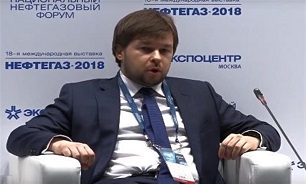Russia Says Unable to Boost Oil Flows to Asia as Iran Sanctions Loom
 But Russia could send more barrels to Europe in the coming months if the economics there become more attractive with US sanctions on Iran's oil exports kicking-in from early November, Sorokin told S&P Global Platts in an interview Monday.
But Russia could send more barrels to Europe in the coming months if the economics there become more attractive with US sanctions on Iran's oil exports kicking-in from early November, Sorokin told S&P Global Platts in an interview Monday.
Russia has nearly tripled crude exports to Asian markets to over 1 million b/d over the last eight years after the East Siberia-Pacific Ocean (ESPO) pipeline came into operation in 2010, redirecting some barrels from less lucrative westbound directions.
"We have been supplying as much as we can to Asia, as this is a premium market. We've always maximized and will maximize volumes flowing there..." Sorokin said. "This is why our ESPO and Novorossiisk are used at full capacity."
Although China, Iran's biggest crude buyer, has said it plans to ignore the imminent US sanctions on Iran, Japan and South Korea and India are all expected to abide by the curbs and restrict their imports of Iranian crude.
Iran's exports have already fallen by some 700,000 b/d since US President Donald Trump pulled out of the 2015 Iran nuclear deal in May, forcing end-users to seek alternative grades. Total Iranian exports are expected to fall by up to 1.7 million b/d when the US sanctions become fully effective on November 5.
Sorokin said that Russian crude producers could increase crude supplies to European markets, as there are no transportation constraints, in contrast to the situation with Russia's eastward infrastructure, which is being used at its full capacity.
"If the oil price grows in Europe due to drops in Iranian crude volumes (anticipated in the wake of US sanctions' re-imposition), companies will increase deliveries to this region at the expense of less attractive directions. We'll supply (more) to where the economics are the most attractive," he said.
Medium sour Urals has been seen by international buyers as one of the best alternatives to Iranian barrels, due to its proximity to the market, with many refineries in Europe built specifically to process Russian crude.
Urals was trading around multi-year highs relative to Dated Brent in both Northwest Europe and the Mediterranean in late August-early September. Its price, though, has weakened in late September due to growing barrels available for Europe amid maintenance season in Russia.
In August, Russia restored the bulk of its output reduced under the OPEC-led production cut deal and has the potential to increase it further by the end of this year. The ministry has though avoided providing any concrete estimates of crude output levels over the coming months.
"The current potential is around 200,000-300,000 b/d up to the end of 2019 from the current level, thanks to fields that have been prepared for full-scale development such as Yurubcheno-Tokhomskoye or Tagul," Sorokin said in comments close to those provided by the energy minister Alexander Novak in late September.
Russia's output amounted to 11.21 million b/d in August, compared to 11.23 million b/d in October 2016, according to Russia's Central Dispatching Unit, the statistical arm of the energy ministry.
In order to support crude production, the Russian energy ministry is now focusing on development of new stimuli for West Siberia, as the country's oil output is currently estimated to peak in early 2020s and start falling afterwards, Sorokin said.
"West Siberia has substantial potential, but nearly half of the reserves in the region, which has the highest level of (oil) taxation, are not profitable for development," he said, adding that production growth seen in Russia over the last 10 years came mainly from other regions that enjoy significant tax breaks.
On the contrary, West Siberia, Russia's main oil province which accounts for some two-thirds of the country's total output, has faced natural decline over the same period. Without new tax breaks, crude production will "inevitably" start falling in the near term, Sorokin said.
The ministry has proposed to the government implementation of six additional measures to address the problem, and hopes they will be approved in the near future. The ministry estimates Russia crude output could drop to as low as 7 million b/d by 2030 without new stimuli.
Sorokin also commented on the introduction of tougher regulations by the International Marine Organization that foresee a significant drop in sulfur content in bunker fuel from January 1, 2020, saying that Russian refiners are mainly prepared for the changes.
"We expect neither a catastrophe nor major problems for Russian companies," Sorokin said.
"Those companies that have modernized their refineries and bunker fuel production in particular (in anticipation of the tougher regulation) are unlikely to notice any change, given stimuli payments (by the state)," he said.
Recently approved changes to the tax legislation, under a so-called tax maneuver, envisages payments of Rb1,000/mt (about $15.25/mt) for fuel that meets new bunker fuel standards, he pointed out.
The country consumes domestically some 15 million mt/year of fuel oil, of which around 4.5 million mt/year is used for heating, with the remaining 8 million -9 million mt/year is used for bunkering, Sorokin said.
Message end/
